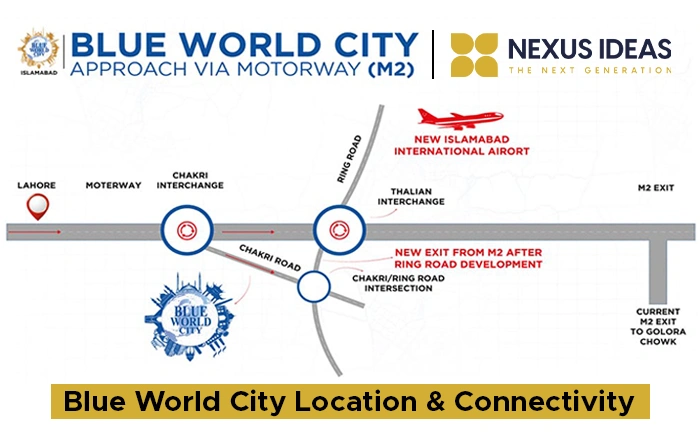In the vast landscape of technological advancements, Virtual Reality (VR) is a captivating tool that Changes Your Dreams into Reality. In simple meaning, VR is a technology that uses software to create or design an environment, breaking the boundaries of the physical world.
Virtual Reality, Change Your Dreams into Reality – Complete Guide
This blog will serve as your gateway to understanding VR, exploring its various types, applications, and the promising future that lies ahead.
What is Virtual Reality?
Virtual Reality, abbreviated as VR, is a technology that gives users a feel of technologically created environments through devices like VR spectacles. These environments can be changed for diverse purposes, ranging from medical training to gaming.
VR is not just a word, it’s a transformative journey that extends your boundaries and invites you into the fascinating world of Augmented Reality (AR), Virtual Reality, and Artificial Intelligence (AI).
Read: What is Augmented Reality
Types of Virtual Reality
To learn the diverse landscape of VR, it’s important to understand its main types:
Non-immersive VR
This type presents a 3D simulated environment accessed through a computer screen, where users control the virtual space with devices like a keyboard or mouse. It is like exploring a room’s decor on a website or engaging in a video game.
Semi-immersive VR
Offering a partial virtual experience, this type focuses on visual 3D aspects, often accessed through screens or headsets. Flight simulators are a common example, providing a visual experience without the complete physical immersion found in fully immersive VR.
Fully immersive VR
The pinnacle of VR experiences, this type completely engages users in a simulated 3D world. Sight, sound, touch, and even smell can be incorporated. Users wear specialized equipment like helmets or gloves, interacting fully with the virtual environment. Although still in its early stages, fully immersive VR is more utilized in gaming and healthcare.
Collaborative VR
This model brings people from different locations into a shared virtual environment. Each person is represented by a 3D character, fostering interaction through microphones and headsets.
Augmented Reality (AR)
Augmented Reality (AR), This technology combines real-world environments with computer-generated content, allowing users to interact with virtual objects in their surroundings.
Mixed Reality (MR)
MR creates a new environment by seamlessly blending real and virtual elements. This technology enables virtual objects to interact with the real world, creating a holistic and immersive experience.
Read: How to buy a plot on installment in budget-friendly Real Estate Housing Projects In Islamabad
Applications of Virtual Reality
Beyond gaming, VR has far-reaching applications, making it a transformative force in various industries:
Training
VR provides a safe, efficient, and cost-effective means to train individuals in high-risk or specialized positions, such as firefighters, pilots, or surgeons.
Education
In the educational sector, VR offers innovative ways of teaching and learning, providing students with immersive insights into typically inaccessible environments.
Healthcare
VR shows promise in treating disorders like anorexia, anxiety, and PTSD. It also aids doctors in explaining diagnoses and treatment options to patients.
Retail
VR is making a mark in the retail business too, allowing customers to virtually try on clothes, experiment with home decor, and make more informed decisions about products and services.
Real Estate
Architects can showcase detailed 3D plans, homebuyers can virtually tour properties, and homeowners can visualize remodels. For any real estate consultancy contact Nexus Ideas.
Entertainment
While VR has already impacted gaming, it is comprised of transforming the film and television industries, offering viewers immersive experiences.
VR Gadgets
To enhance the VR experience, a range of gadgets has emerged:
VR Covers
These protect the skin from discomfort during extended VR sessions, particularly in high-intensity games. Ideal for games like Population One, Beat Saber, or FitXR.
VR Gloves
Providing a genuine tactile feel, VR gloves enhance engagement and realism. They add a layer of physical interaction to the virtual world.
Tracker for The Entire Body
Full Body Trackers offer a high level of immersion, allowing users to fully engage in the virtual world. While primarily marketed as a training tool, they provide an adrenaline rush for enthusiasts.
VR Lenses
These protect the VR headset lenses, preventing scratches and filtering out harmful light to reduce eye strain.
Motion Controllers
Enabling users to interact with mixed reality, motion controllers enhance the fine-grained interaction with digital objects.
Omnidirectional Treadmills (ODTs)
These allow users to move physically in any direction, providing a fully immersive experience in VR surroundings.
Pros and Cons of Virtual Reality
As with any technology, VR comes with its set of advantages and challenges:
Pros
- Better than reality: VR offers experiences beyond the constraints of the physical world.
- Used in various fields: From healthcare to education, VR finds applications across diverse industries.
- Users have awesome experiences: VR immerses users in captivating and memorable experiences.
- Gives detailed views: Especially beneficial in fields like architecture and real estate.
- Connects with people: Collaborative VR fosters interaction among individuals, transcending geographical boundaries.
- Effective communication: VR facilitates effective communication, especially in training scenarios.
Cons
- High cost: Implementation and adoption of VR technology can be expensive.
- Communication should not be replaced for groups of people: Face-to-face communication remains essential, and VR should complement rather than replace it.
- Feeling of worthlessness: Excessive immersion in the virtual world may lead to feelings of detachment from reality.
- Users addicted to the virtual world: Overindulgence in VR can result in addiction, affecting real-life interactions.
- Technology is still experimental: VR technology is continually evolving, and some aspects are still in the experimental stage.
- Training in a VR environment is not real: While VR is excellent for simulation, real-world experiences may differ.
Read: Top 10 Best Restaurants in Islamabad
The Future of Virtual Reality
The journey into the virtual frontier is far from over, and the future promises exciting developments.
AI and VR Integration
Artificial Intelligence will play a significant role in creating dynamic and adaptive VR experiences, personalizing content for users.
Expanded Applications in Education and Training
VR is likely to find broader applications in education, including soft skills development, team-building exercises, and language learning.
Entertainment and Gaming
VR gaming will continue to evolve with more sophisticated and interactive experiences, pushing the boundaries of storytelling and gameplay.
Enhanced Hardware
Future VR devices are expected to be more lightweight, comfortable, and user-friendly. Advancements in display technology may lead to higher resolutions and wider fields of view.
Mixed-Reality Experiences
The lines between VR, AR, and MR may blur, creating seamless interactions with virtual objects in the real world. This opens new possibilities for gaming, education, and work applications.
Conclusion
From gaming to healthcare, education to entertainment, VR is reshaping the way we experience and interact with our surroundings. Embrace the journey, stay curious, and remember, the future is not just virtual; it’s a reality waiting to unfold.
Reviewed By Mr.Rizwan Sajjad



